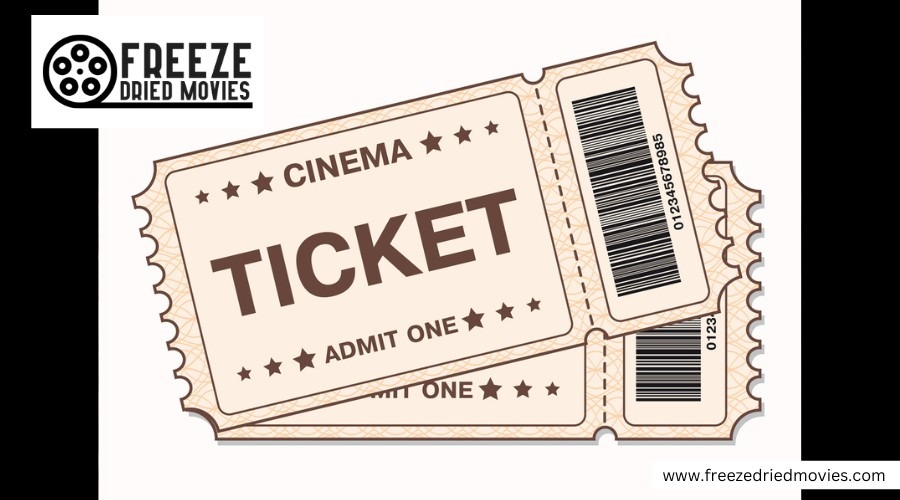How Much Did a Movie Ticket Cost in the 1970s?

In the 1970s, you'd pay between $1.50 to $4.00 for a movie ticket, equivalent to $7.00-$9.34 in today's dollars when adjusted for inflation. Notably, 1973 marked the inflation-adjusted peak at $9.34 before prices stabilized between $7-$8 for the rest of the decade. Major cities like New York and Los Angeles charged more than rural areas. These premium prices emerged despite declining theater attendance, creating a captivating context for the decade's cinematic renaissance.
Key Takeaways
- Movie ticket prices in the 1970s peaked at $1.76 in 1973, equivalent to $9.34 when adjusted for inflation to 2013 dollars.
- Throughout most of the 1970s, inflation-adjusted ticket prices stabilized between $7-$8 (in 2013 dollars).
- The 1970s had the highest inflation-adjusted movie ticket prices compared to other decades in American cinema history.
- The actual non-adjusted price of a movie ticket in the early 1970s was typically between $1.50-$2.00.
- Regional variations existed, with major metropolitan areas like New York and Los Angeles charging more than the national average.
Movie Ticket Pricing Trends Throughout the 1970s
How exactly did moviegoers experience the rollercoaster of ticket prices during the 1970s? If you were heading to theaters in the early part of the decade, you'd have noticed your wallet getting progressively lighter. The average price of a movie ticket climbed steadily from the late 1960s until it reached an inflation-adjusted peak of $9.34 in 1973—the highest in cinema history.
After 1973, you'd have experienced some relief as ticket prices began to decline. For the remainder of the decade, the cost stabilized between $7-$8 (in 2013 dollars). Despite this decrease, the 1970s maintained the highest inflation-adjusted movie ticket prices compared to other decades. Curiously, while the movie industry charged premium prices during this era, it also delivered some of the most acclaimed and diverse films ever made. These pricing patterns directly reflected the economic challenges facing the United States during that tumultuous decade.
The Impact of Inflation on 1970s Movie Prices
Why did moviegoers in the 1970s face such steep prices at the box office? The answer lies primarily in the economic conditions of the era. When adjusted for inflation, the average cost of movie tickets reached an unprecedented high of $9.34 in 1973—a dramatic increase from the $4-$5 range maintained through the early 1960s.
The 1970s saw significant inflation across the Consumer Price Index, and movie theaters weren't immune to these economic pressures. What appeared as rising ticket prices to consumers was largely the effect of broader economic forces rather than industry-specific factors.
Curiously, movie tickets actually became more affordable in the 1980s and 1990s when adjusted for inflation, suggesting that the 1970s represented a unique period where inflation hit the cinema experience particularly hard. This contrasts sharply with the 1950s when drive-in theaters charged as little as $0.50 for a double feature, making movie-going much more accessible.
Comparing 1970s Movie Prices to Modern Ticket Costs
When comparing movie ticket prices across five decades, you'll notice a surprising trend: today's cinema costs are remarkably similar to those of the 1970s when adjusted for inflation. The 1970s saw an inflation-adjusted peak of $9.34 in 1973, while 2019's national average finally crossed the $9 threshold at $9.11.
Throughout most of the 1970s, moviegoers paid the equivalent of $4-$5 in today's dollars—pricing that remained relatively stable until recently. The 1990s actually offered better value, with average prices staying below $5 when adjusted for inflation.
Movie theater owners have managed to keep pace with inflation while substantially upgrading the experience. The movie industry has transformed from basic seating and projection to premium amenities, giving today's audiences more bang for their inflation-adjusted buck. This represents a significant shift from the 1960s when the average ticket price of $1.10 in 1966 would buy nearly seven hours of entertainment including cartoons, newsreels, and feature films.
Regional Variations in Movie Ticket Prices During the 1970s
While the national average for movie tickets in the 1970s tells one story, a closer look at regional pricing reveals significant variations across America. According to the National Association of Theatre Owners, the cost of a movie reached its inflation-adjusted peak in 1973 at $9.34, but this price wasn't uniform throughout the United States.
If you lived in major metropolitan areas like New York or Los Angeles, you'd have paid considerably more than the national average. Meanwhile, rural communities and smaller towns offered more affordable tickets. These regional disparities stemmed from various factors including local economic conditions, market competition, and population density.
The Association of Theatre Owners noted that while 1973 represented the nationwide peak year, different regions experienced their highest ticket prices at various points throughout the decade. This pattern contrasts with the 1940s when weekly moviegoing habits were more consistent across regions, with over 60% of Americans attending films weekly.
Why the 1970s Marked a Peak in Inflation-Adjusted Ticket Prices
The 1970s stand as a fascinating economic anomaly in cinema history, representing the peak of inflation-adjusted movie ticket prices at $9.34 in 1973. According to movie industry data sites, this price surge occurred while weekly theater attendance plummeted from 78 million in 1946 to just 15.8 million tickets sold by 1971.
This peculiar combination—high prices and fewer people choosing to go to the movies—created an unexpected artistic renaissance. Films like "The Snake," movie of the year during this era, exemplified how studios invested Millions of Dollars in daring, handcrafted productions despite smaller audiences. The industry paradoxically thrived creatively while commercially contracting, producing critically acclaimed works that many consider superior to the more commercially-focused films of the 1980s and beyond.


